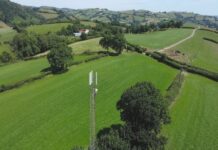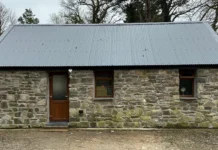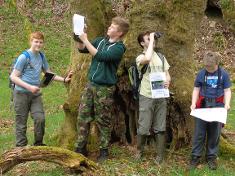HISTORIC maps are being studied to help protect some of rural Swansea’s rich biodiversity.
Swansea Council is using 19th Century tithe maps to assess the health of ancient woodland on Gower and the city’s western urban fringes.
Expert staff from the council’s nature conservation team and West Glamorgan Archive Service have joined forces with dozens of environmental volunteers and University of Wales Trinity St David students to lead the project thanks to a grant from the Heritage Lottery Fund.
Ancient woodland is woodland known to have been relatively untouched since at least 1600.
Since no woodland is thought to have been planted in Britain before the Elizabethan period, it’s likely that what’s classified as ancient woodland are remainders of the forest cover that once covered Britain following the end of the last Ice Age.
Cllr Mark Child, Cabinet Member for Wellbeing and Healthy City and the Council’s Biodiversity Champion, said: “Gower’s landscape and ecology has long-been recognised for its exceptional value. The peninsula was the UK’s first designated Area of Outstanding Natural Beauty, but relatively little is known about the health of its ancient woodland and how it’s been affected by human activity.
“Learning about this through the on-going project will help us make more informed decisions to preserve and improve Gower’s biodiversity in future. We also hope the study will lead to an increased appreciation of our ancient woodland as an irreplaceable asset.
“For much of Gower, tithe maps are the earliest maps available to identify ancient woodland, so they’re a key resource in this project.”
Mark Winder, County Ecologist at Swansea Council, said: “A sure sign that woodland has been relatively undisturbed over the centuries is the presence of certain plants that are extremely slow to colonise and become established in woodland. This process takes hundreds rather than tens of years. These ancient woodland species are in flower for only a few weeks in spring before being deprived of light from the woodland canopy, so it’s vital that the woodland surveys to identify and map them are carried out at this time of year.”
All volunteer groups taking part have attended training sessions in Bishop’s Wood. Volunteers come from a wide variety of groups, including the Gower Society, the Clyne Valley Community Partnership, the Friends of Penllergare, the Wildlife Trust, the Friends of Bishop’s Wood and Clydach’s Kites and Dippers club.
Help keep news FREE for our readers
Supporting your local community newspaper/online news outlet is crucial now more than ever. If you believe in independent journalism, then consider making a valuable contribution by making a one-time or monthly donation. We operate in rural areas where providing unbiased news can be challenging. Read More About Supporting The West Wales Chronicle























